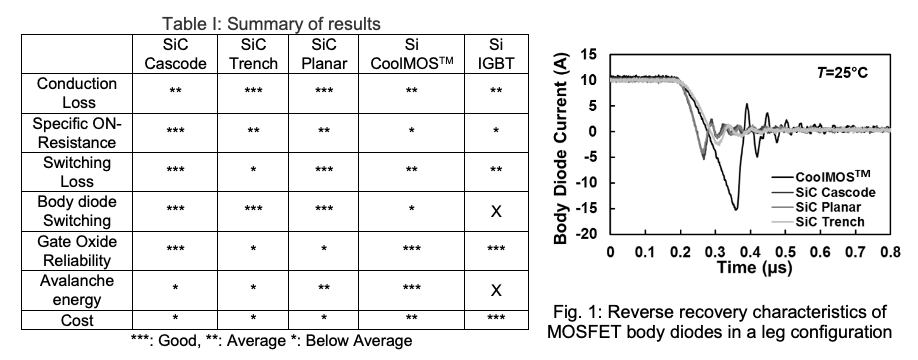Performance and Reliability Review of 650 V and 900 V Silicon and SiC Devices: MOSFETs, Cascode JFETs and IGBTs
Authors: Jose Ortiz Gonzalez, Ruizhu Wu, Saeed Jahdi, Olayiwola Alatise
Extended Abstract:
The future of power conversion at low-to-medium voltages (around 650 V) poses a very interesting debate. At low voltages (below 100 V), the silicon (Si) MOSFET reigns supreme and at the higher end of the automotive medium-voltage application spectrum (approximately 1 kV and above) the SiC power MOSFET looks set to topple the dominance of the Si insulated-gate bipolar transistor (IGBT). At very high voltages (4.5 kV, 6.5 kV and above) used for grid applications, the press-pack thyristor remains undisputed for current source converters and the press-pack IGBTs for voltage source converters. However, around 650 V, there does not seem to be a clear choice with all the major device manufacturers releasing different technology variants ranging from SiC Trench MOSFETs, SiC Planar MOSFETs, Cascode-driven WBG FETs, silicon NPT and Field-stop IGBTs, silicon super-junction MOSFETs, standard silicon MOSFETs, and enhancement mode GaN high electron mobility transistors (HEMTs). Each technology comes with its unique selling point with gallium nitride (GaN) being well known for ultrahigh speed and compact integration, SiC is well known for high temperature, electro-thermal ruggedness, and fast switching while silicon remains clearly dominant in cost and proven reliability. Cascode devices are particularly interesting since they combine the easy gate driveability of silicon MOSFETs with the switching and conduction performance of SiC JFETs or GaN HEMTs. Furthermore, Cascode devices avoid the gate dielectric reliability issues of WBG materials.
Some of the results are shown in Table I and Fig. 1. In the complete article the conduction losses, switching losses, body diode performance, avalanche ruggedness and gate oxide reliability are studied.


